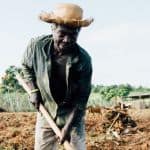‘Appeasement Reporting’ in Development Projects: Satisfying Donors at the Expense of Beneficiaries
“Appeasement reporting” is a common practice among development organizations – both NGOs and government aid agencies – that serve smallholder farmers. It refers to the tendency, among implementing organizations, to slant their reporting to appease their donors and make all projects appear successful, rather than objectively reporting any limited interest and participation among project beneficiaries. Appeasement reporting is often necessary to assure project extensions and future projects – particularly when donors expect to only receive success stories. The question is: How does this approach impact beneficiaries, future projects and the organizations involved?
The problem originates with a project’s pre-implementation costs. At many government agencies and NGOs, the process of applying for funding for a major project involves multiple stages, which can require both significant allocations of resources and substantial time – sometimes years – for applicants to complete. With this up-front investment, no one wants to learn that a project was inappropriate and not appreciated by the beneficiaries. And even if this input was welcome, the donors designing the projects are usually isolated from the beneficiaries by a four-tiered development hierarchy. Also, during the project development period, the beneficiaries’ interests may not be accurately represented by their governments, which may be financially stalled, unfamiliar with their plight, or expecting informal income opportunities derived from the projects.
So ultimately, when a request for proposals (RFP) is released and implementing organizations start to bid, there is little flexibility to steer the project towards more appropriate innovations that may arise. Thus, even if the project proves to be impractical, implementing organizations are forced to comply with its terms and make the best of a challenging situation. This requires appeasing the donor to make the project appear successful.
How Appeasement Reporting Works
There are usually four techniques involved in appeasement reporting – and these are applied in different ways to development projects of many types. Here’s one example of how this approach can conjure success out of failure, in this case involving farmer organizations and the cooperative business model for poverty alleviation of smallholders.
- Vilify private service providers for presumably exploiting smallholders: This is often stated in the RFP as a fact and justification for the project, with no need to verify. However, a detailed analysis of the private service providers operating within a suppressed economy generally shows very efficient business models with only modest profits, with most of the presumed exploitative mark-ups representing legitimate business expenses, including the fairly transparent costs involved in serving smallholder communities in remote rural areas served by unpaved roads.
- Report aggregate numbers that appear impressive, but which prove to be trivial after a few simple computations. For example, the Ethiopia Fair Trade coffee project listed some 21,891 cooperative members and claimed 181 tons of coffee exported. This sounds substantial, but divide the weight of the exported coffee by the number of co-op members and it amounts to under 8 kg/member, with a possible financial benefit of at most $5.00/year. This would represent less than 5 percent of the members’ coffee production and under 1 percent of their farm income. It is difficult to see any poverty reduction with this kind of limited uptake of the project among farmers, who continue to rely on the vilified private service providers for 95 percent of their business.
- Avoid conveying the true costs of the cooperative, by only counting the benefits it delivers to farmers, while disregarding the expenses involved in running it. The overhead costs of running a co-op often amount to about 30 percent of the selling price of its crops. This 30 percent represents the extra expense required to maintain individual members’ accounts, and to warehouse their crops while bulking produce to get the promoted financial benefit. This requires facilities which need to be maintained, and workers who need to be paid to handle the goods – as well as cooperative managers temporarily assigned to the project. In addition, cooperatives are often expected to get involved in providing social services to members. Thus, the cooperative model is administratively more cumbersome than private service providers, which can quickly translate into excessive overhead expenses that can easily exceed the profit margins of private service providers – as well as the financial advantage of bulking production. When overhead exceeds financial benefits, will relying on the cooperative reduce payments to the farmers and force them deeper into poverty? It should only take about 30 minutes of objective cost comparison to quantify this risk. If this had been done some 30 years ago, how many billions of dollars would have been available for more effective approaches to poverty alleviation?
- Ignore the fact that the project requires continuous, extensive and expensive external facilitation and subsidies to survive. For example, take the Fair Trade Coffee Project in Haiti, where over half a dozen NGOs were facilitating the program. Even with this support, most projects collapse almost immediately once the facilitation effort ends, as with the Farmapine pineapple cooperative in Ghana. And whether or not they ultimately collapse, there are several reasons why cooperatives are likely to lose their envisioned competitive advantage without outside support.
The Impact of Appeasement Reporting
While appeasement reporting may please project officers and assist implementers with contract extensions and future contracts, it does very little for the beneficiaries looking for assistance out of poverty. Instead, the appeasement reporting serves to more deeply entrench a project’s activities and focus areas into future development initiatives, preventing these new projects from evolving to more effective approaches to poverty alleviation. Ironically, that means appeasement reporting on a poverty-focused project can ultimately keep the project’s intended beneficiaries from working their way out of poverty.
Keep in mind that the project officers who receive appeasement reports generally accept them at face value, happy with the apparent success of the project. They tend to have little direct contact with the beneficiaries, and what contact they have is highly orchestrated by host officials with possible vested personal interests. These officers are also too tied up in administering the project’s details to carefully scrutinize the reports – even with the few simple computations that would show the limited success of a project. This can lead to frustration among new project leaders, as they are misled by reported success to think their latest project will be well-received, only to find the beneficiaries are not interested. This could cause them to place the blame on “difficult” beneficiaries, when it is actually the project’s model itself that is out of step.
To get development programs on track to better serve their beneficiaries, monitoring and evaluation (M&E) efforts need to tighten up their evaluation criteria. When it comes to assessing the farmer organization model, these M&E criteria should consider basic business parameters that measure not only the farmers’ willingness to participate, but also the extent to which they rely on the project services vs. indigenous business alternatives. Unfortunately, these business parameters are almost always missing from farmer organizations’ reporting. It would be interesting to see why these criteria are not included – though my suspicion is that they would highlight such a low level of beneficiary participation that disclosing this would be embarrassing to the project organizers.
If that is indeed the case, the whole reporting process would represent virtually no commitment to assisting smallholder farmers, but rather a full commitment to imposing a cumbersome business model that is likely to further entrench them in poverty. (Though fortunately, the beneficiaries themselves are not that gullible, and tend to wisely limit their involvement.)
Those responsible for M&E need to fully appreciate that they are not a mechanism for publicizing the project, but are mandated to represent the underwriting taxpayers, assuring that taxes are wisely invested and not squandered on projects with questionable impact on beneficiaries. Avoiding appeasement reporting is essential, not only to improve projects serving smallholders, but to avoid provoking skepticism about reporting in other areas of development.
Richard Tinsley is professor emeritus in the Soil and Crop Sciences Department of Colorado State University.
Photo credit: jvleis via Flickr.
- Categories
- Agriculture, Impact Assessment



